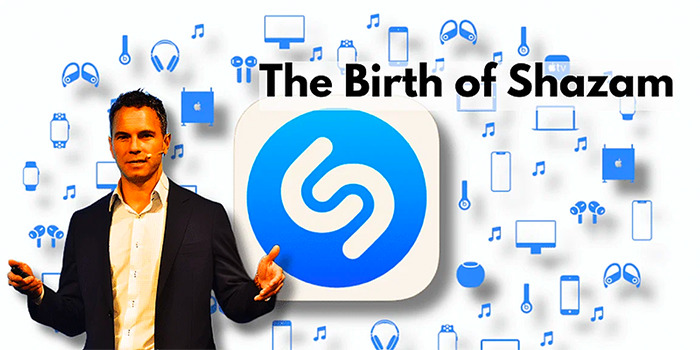
Peter Zeihan: Europe Goes Nuclear
We’ve got two major developments in Eurasia. We’re talking about Ukraine disabling two ships in the Caspian Sea and Poland getting EU approval to build…
Thought Leader: Peter Zeihan

It was the turn of the millennium, a full decade prior to Steve Jobs’ ground-breaking iPhone introduction, that a small but pioneering mobile application was launched with an astounding value of 400 million dollars. Its visionary creator? A man named Chris Barton, who came to be known for his trailblazing venture, Shazam.
The son of a nuclear physics professor and a computer scientist, Chris Barton was quite literally born with technology in his DNA. His unique lineage meant that he was predisposed to an insatiable curiosity about the world and a passion for technology. His journey into the realm of start-ups commenced in 1998, marking the beginning of an adventure that would revolutionize the way we interact with music.
While serving as an intern at Microsoft subsidiary MSN, Chris had a eureka moment. As a music lover, he was aware of the frustrating experience of hearing an appealing song on the radio but being unable to identify it. This frustration spurred him into action and prompted him to imagine a solution. He envisioned a mechanism that could allow people to identify songs playing around them with ease. Teaming up with PhD scholar Avery Wang, Chris embarked on the challenging task of building an algorithm that could identify music. This collaboration laid the foundation for the creation of Shazam.
Launched in 2000, the first version of Shazam was starkly different from the slick app we are familiar with today. This early incarnation required users to dial a four-digit number to record the song playing. Once the song was recorded, a voice would then identify the track and relay it back to the user, a service which carried a fee per track. In a masterstroke, Chris negotiated and secured deals with key British mobile networks, including Vodafone. This strategic move laid the groundwork for Shazam’s unique technology, and set the stage for a revolution in the mobile application space.
By the time the iPhone made its grand entrance in 2007, Shazam had already carved a niche for itself as a mobile app, effectively placing it ten years ahead of the curve. It was therefore no surprise that it quickly became an indispensable tool for any smartphone user. Shazam’s popularity surged, and by 2012, the app boasted over 225 million users, making it one of the most popular iPhone apps in history.
Apple, with its keen eye for innovation and strategic acquisition, recognized Shazam’s potential and took the decisive step of acquiring it in 2018 for a staggering 400 million dollars. Apple’s 6th largest acquisition of all time. In a world that often reserves recognition for late-stage innovators, Chris Barton’s pioneering journey serves as a compelling testament to the power of foresight and the value of innovative thinking. From its humble beginnings to its final triumph, Shazam is a tale of technology, persistence, and one man’s vision to change how we interact with music. The tale of Chris Barton and Shazam is indeed one for the digital history books.
Peter Zeihan: Europe Goes Nuclear
We’ve got two major developments in Eurasia. We’re talking about Ukraine disabling two ships in the Caspian Sea and Poland getting EU approval to build…
Thought Leader: Peter Zeihan
Dr. Sanjay Gupta’s Top Health Stories of 2025
From the resurgence of measles to a new way to treat pain, 2025 was a challenge for public health while still offering moments of hope. Sanjay…
Thought Leader: Sanjay Gupta
Ian Bremmer: The state of global conflict in 2025
On GZERO World, Ian Bremmer takes a hard look at the biggest global crises and conflicts that defined our world in 2025 with CNN’s Clarissa…
Thought Leader: Ian Bremmer

